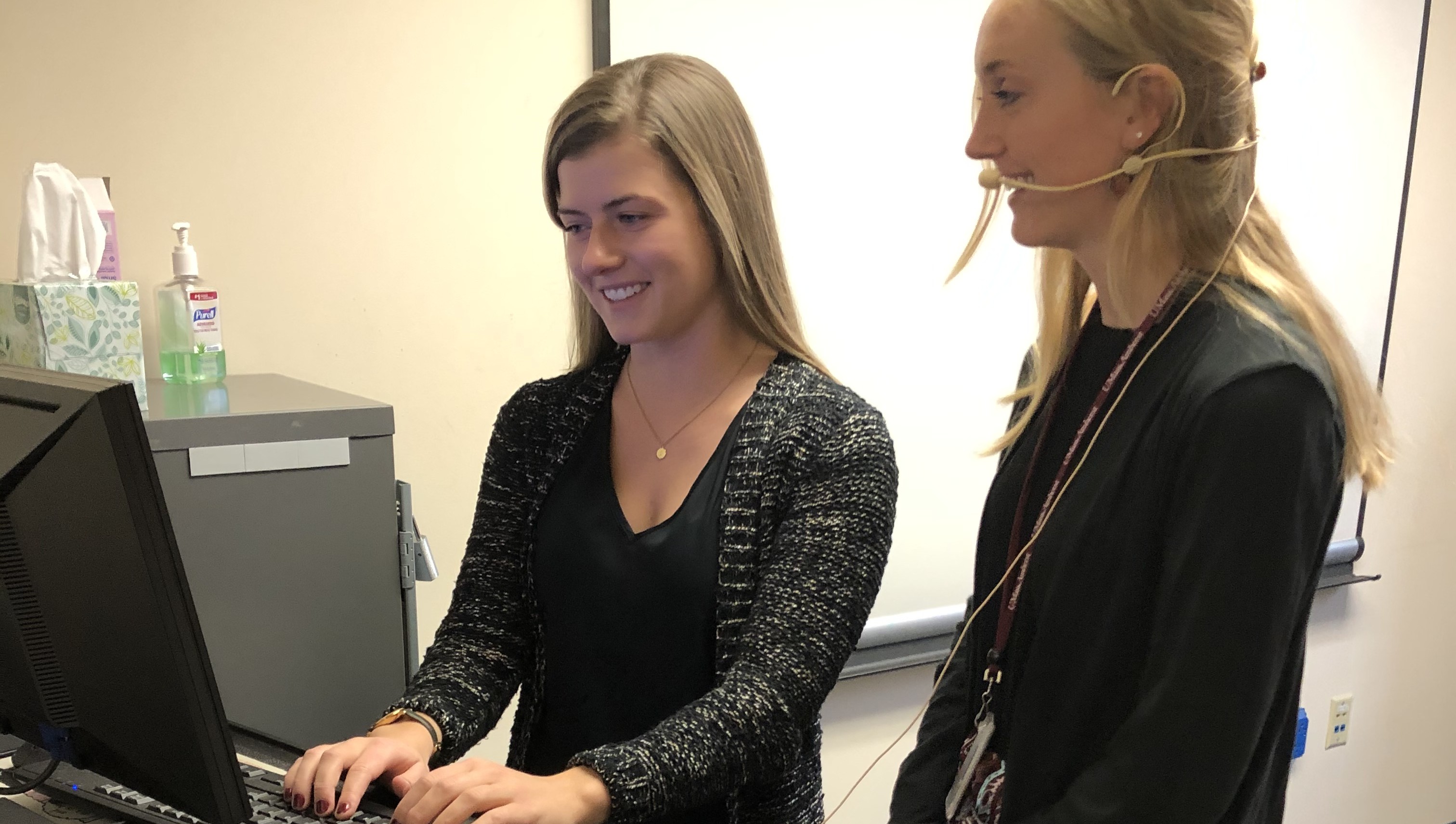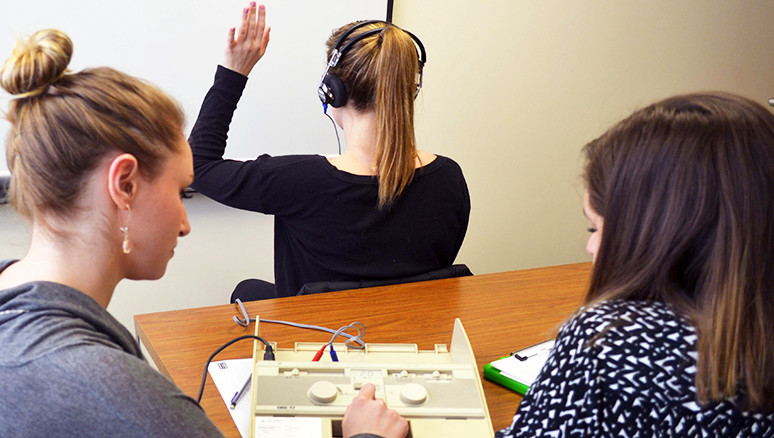This project is now in update mode. Check back regularly to see how things are progressing.
THANK YOU EVERYONE!!!!
Hello donors!
As you may have noticed, our MinuteFund donation period has come to a close. With your help, $1,120 in donations were collected! We are immensely grateful for every dollar donated. All of these MinuteFund donations will be put towards obtaining new technology for our current and future graduate students in order to enhance their learning experiences. These students will go on to become highly skilled Speech Language Pathologists and Audiologists who will help to improve the lives of people with communication disorders. This is all possible because of your gracious donations which will help to fund the purchase of needed technology, such as new computers that will support our recently installed state-of-the-art observation and recording system. These new technologies, as well as the dedication of those working in the incredible Department of Communication Disorders at UMassAmherst, ensure that we equip our students with the tools they need to learn and grow as clinicians!
Once again, we thank you for your contributions to this fund!!! Wishing you a 2020 filled with learning, love, joy, and health!
DONATION PERIOD EXTENDED!
Good News Donors!
After posting information regarding this campaign on another social media outlet, we received a very positive response in a short amount of time! Thus, we have decided to extend our MinuteFund for another week. We hope to come even closer to our goal of $3,000 as the week progresses. To those of you who have already donated or shared our fund, THANK YOU! Without your help and willingness to contribute, none of this would be possible! Also, go check out the UMass Communication Disorders Facebook page (https://www.facebook.com/UMassCommunicationDisorders/) , share their post if you’d like, and check out all of the other awesome information about the Department of Communication Disorders at UMass!
Time for more facts!
How is speech normally produced?
We make speech sounds through a series of precisely coordinated muscle movements involving breathing, phonation (voice production), and articulation (movement of the throat, palate, tongue, and lips). Muscle movements are controlled by the brain and monitored through our senses of hearing and touch. (https://www.nidcd.nih.gov/health/stuttering)
Neurogenic stuttering
Neurogenic stuttering may occur after a stroke, head trauma, or other type of brain injury. With neurogenic stuttering, the brain has difficulty coordinating the different brain regions involved in speaking, resulting in problems in production of clear, fluent speech. At one time, all stuttering was believed to be psychogenic, caused by emotional trauma, but today we know that psychogenic stuttering is rare. (https://www.nidcd.nih.gov/health/stuttering)
What is noise-induced hearing loss?
Every day, we experience sound in our environment, such as the sounds from television and radio, household appliances, and traffic. Normally, these sounds are at safe levels that don’t damage our hearing. But sounds can be harmful when they are too loud, even for a brief time, or when they are both loud and long-lasting. These sounds can damage sensitive structures in the inner ear and cause noise-induced hearing loss (NIHL). NIHL can be immediate or it can take a long time to be noticeable. It can be temporary or permanent, and it can affect one ear or both ears. Even if you can’t tell that you are damaging your hearing, you could have trouble hearing in the future, such as not being able to understand other people when they talk, especially on the phone or in a noisy room. Regardless of how it might affect you, one thing is certain: noise-induced hearing loss is something you can prevent. (https://www.nidcd.nih.gov/health/noise-induced-hearing-loss)
Please keep sharing our page and help us reach the $3,000 goal for our graduate students! THANK YOU!
ALMOST THE END OF THE CAMPAIGN!
Hello again donors!
We are in the final stretch of our campaign with one day left to donate! Together, we have raised $919 thus far. One hundred percent of the donations will be used towards new technology for our Speech-Language Pathology and Audiology graduate students! As always, please share this link to anyone that you think may be interested.
As we are nearing the end of the Fall semester at UMass Amherst, the Audiology and Speech Pathology graduate students have had an abundance of new experiences, and are strengthening their clinical skills daily. Here are a few more facts pertaining to some of the communication disorders our students will encounter in their training and in their future clinical careers. We hope these facts may bring awareness to the reality that those living with communication disorders face, as well as the professionals who work with these individuals and change lives! These professionals include our graduate students working hard to start their future careers as Audiologists and Speech Language Pathologists. Are any of these facts surprising to you?
· The vocal folds are two elastic bands of muscle tissue located in the larynx (voice box) directly above the trachea (windpipe) (see figure). When you breathe, your vocal folds remain apart and when you swallow, they are tightly closed. When you use your voice, however, air from the lungs causes your vocal folds to vibrate between open and closed positions. If you have vocal fold paralysis, the paralyzed fold or folds may remain open, leaving the air passages and lungs unprotected. You could have difficulty swallowing or food or liquids could accidentally enter the trachea and lungs, causing serious health problems. (https://www.nidcd.nih.gov/health/vocal-fold-paralysis)
· Your sense of balance relies on a series of signals to your brain from several organs and structures in your body, specifically your eyes, ears, and the muscles and touch sensors in your legs. The part of the ear that assists in balance is known as the vestibular system, or the labyrinth, a maze-like structure in your inner ear made of bone and soft tissue. Within the labyrinth are structures known as semicircular canals. The semicircular canals contain three fluid-filled ducts, which form loops arranged roughly at right angles to one another. They tell your brain when your head rotates. (https://www.nidcd.nih.gov/health/balance-disorders#d)
As our campaign is quickly approaching its end, we would like to once again express our gratitude to all donors, and anyone who has shared our page. Your generosity means the world to the Center for Language, Speech and Hearing and the Department of Communication Disorders at UMass Amherst! THANK YOU SO MUCH!!
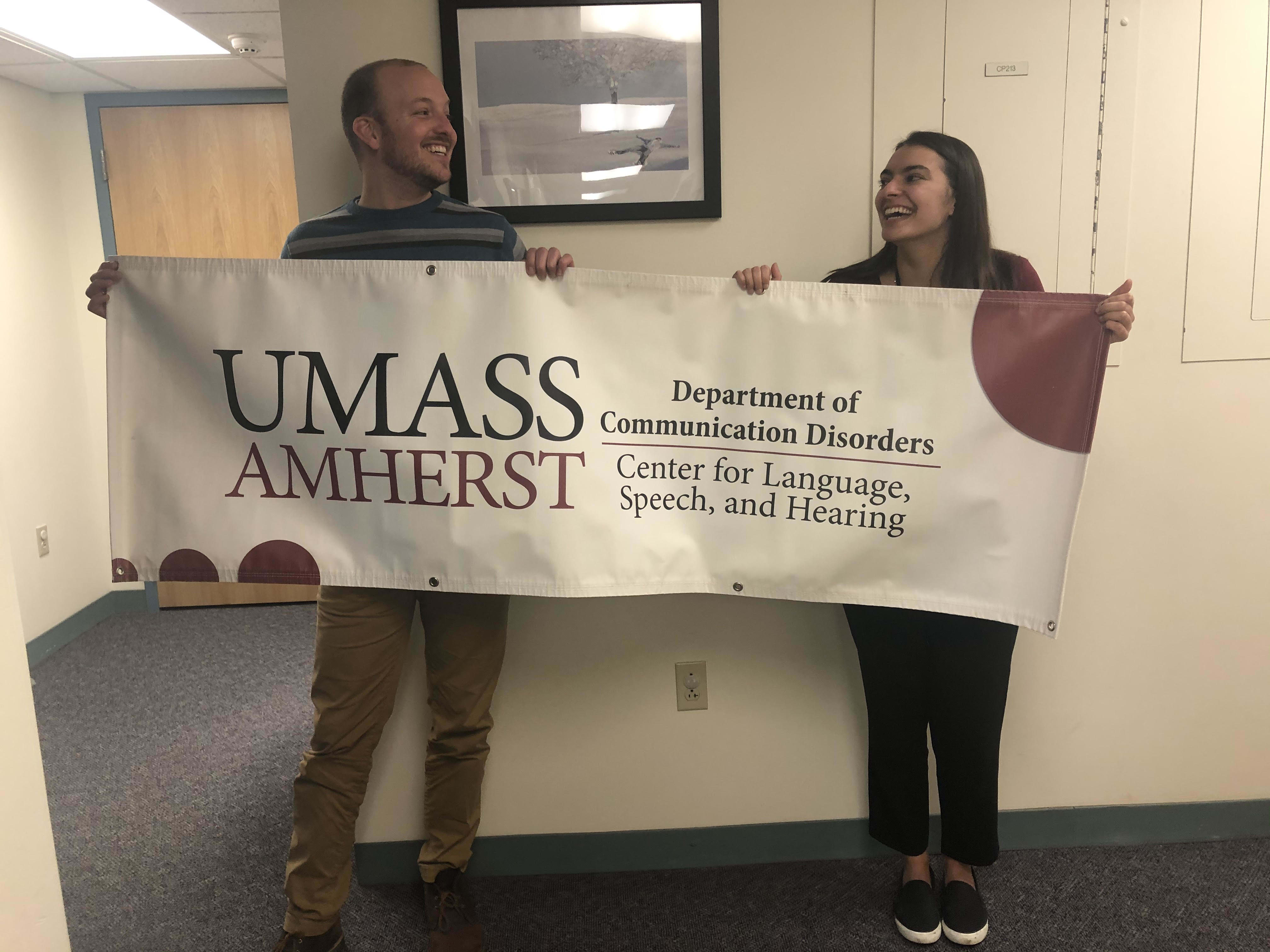
GIVING TUESDAY!
Hello again!
We hope that everyone had a wonderful and restful Thanksgiving! It is hard to believe that we are in the home stretch of 2019.
Once again, we would like to sincerely thank anyone who has donated to the campaign for new technology in our clinic. In this season of giving, it is fitting that tomorrow is #GivingTuesday. Giving Tuesday marks a day of global generosity unleashing the power of people and organizations to transform their communities and the world (https://www.givingtuesday.org/about). We encourage you to give to any organization that you feel passionate about! Whether it be our MinuteFund, an international charity, or a local foundation, any amount of giving ensures a positive impact on those around you.
In regards to our fund, we hope that Giving Tuesday may help us come closer to reaching our goal of $3,000—thus far we have raised $747. With your generosity, you will support our hard working graduate students in their clinical training, and the UMass Communication Disorders graduate programs as a whole.
Here are some more facts about communication disorders. Do you know anyone affected by any of the following disorders? Our program teaches students how to evaluate and treat these and all the other communication and swallowing disorders we have highlighted in our previous updates.
The U.S. Centers for Disease Control estimates that nearly 15% of the general public—over 50 million Americans—experience some form of tinnitus. Roughly 20 million people struggle with chronic tinnitus, while two million have extreme and debilitating cases. (https://hearinghealthfoundation.org/what-is-tinnitus)
Ménière’s disease is a chronic vestibular (inner ear) disorder. The inner ear influences both hearing and balance. It is named for the French doctor Prosper Ménière (18 June 1799 – 7 February 1862), who, in 1861, first identified and described the symptoms of the medical condition that now bears his name. These symptoms include fluctuating hearing loss, episodic vertigo, a sensation of ear fullness, and tinnitus. Typically, only one ear is affected. (https://hearinghealthfoundation.org/what-is-menieres-disease)
Spasmodic dysphonia is a neurological disorder affecting the voice muscles in the larynx, or voice box. When we speak, air from the lungs is pushed between two elastic structures—called vocal folds or vocal cords—with sufficient pressure to cause them to vibrate, producing voice (see figure). In spasmodic dysphonia, the muscles inside the vocal folds experience sudden involuntary movements—called spasms—which interfere with the ability of the folds to vibrate and produce voice. (https://www.nidcd.nih.gov/health/spasmodic-dysphonia)
People with dysphagia have difficulty swallowing and may even experience pain while swallowing (odynophagia). Some people may be completely unable to swallow or may have trouble safely swallowing liquids, foods, or saliva. When that happens, eating becomes a challenge. Often, dysphagia makes it difficult to take in enough calories and fluids to nourish the body and can lead to additional serious medical problems. (https://www.nidcd.nih.gov/health/dysphagia)
Thank you for your support and for reading our updates on this campaign! We hope that everyone is staying safe and warm on this snowy day in New England. Please keep sharing this campaign far and wide so that we can shine a light on the good work of our Department of Communication Disorders and provide even more support to our amazing grad students!
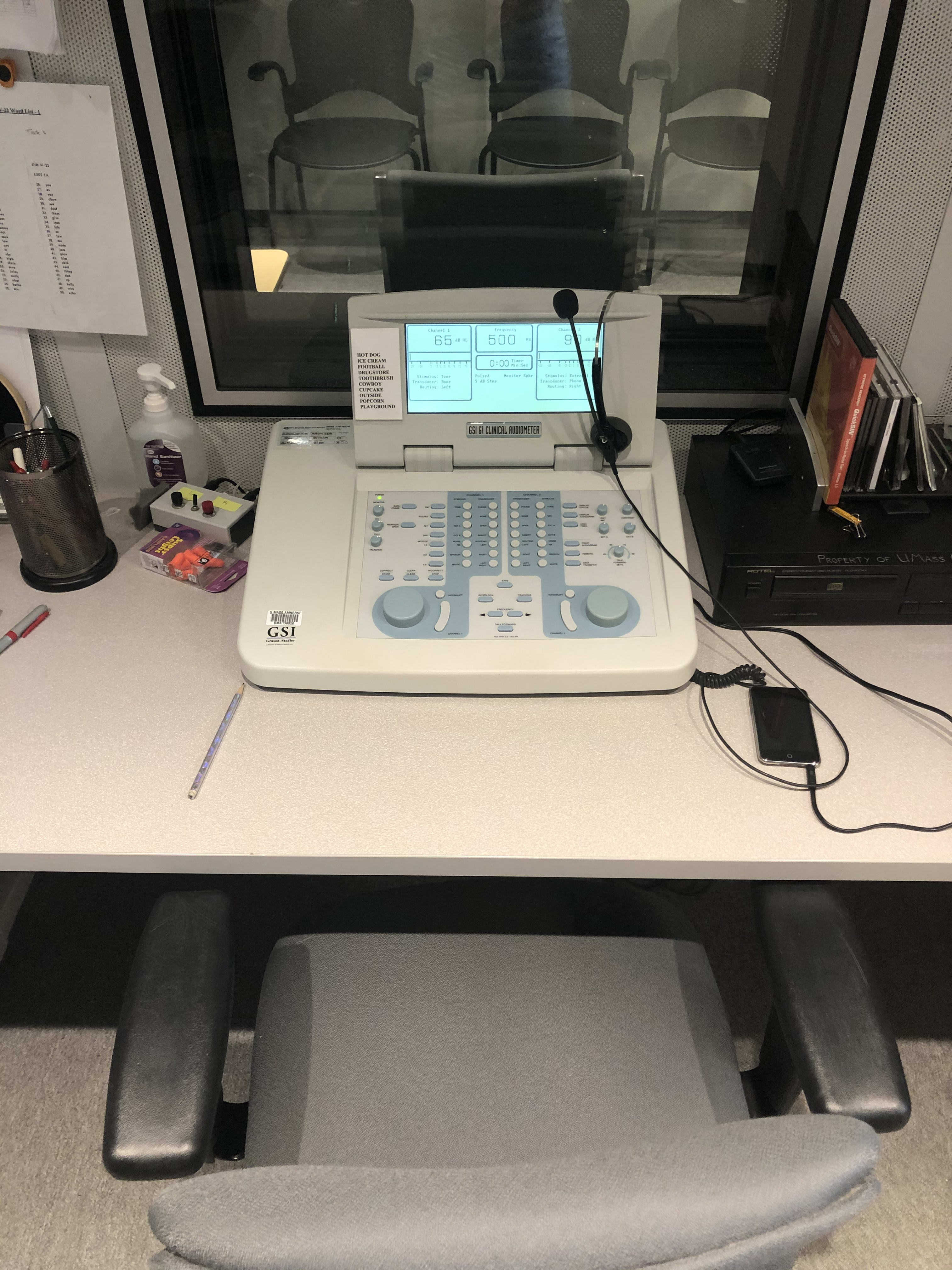
THANK YOU SO MUCH! PLEASE KEEP SHARING WIDELY!
Donors,
We are amazed by the generosity of your donations thus far in the campaign! Since our last update, we have doubled the progress towards meeting our goal! If you have donated, we wholeheartedly thank you!! If you haven’t, please consider doing so, or consider sharing the donation page to spread the word to fellow classmates, alumni, family members, or anyone in support of Communication Science and Disorders! Stay tuned for #GivingTuesday which will take place on Tuesday, December 3rd.
Here are some more interesting facts pertaining to Communication Disorders. We hope our updates can help to inspire you to support the graduate students of our program who will go out into the world and help people with many of the same communication challenges!
Among children who have a voice, speech, language, or swallowing disorder, 34 percent of those ages 3-10 have multiple communication or swallowing disorders, while 25.4 percent of those ages 11-17 have multiple disorders. (https://www.nidcd.nih.gov/health/statistics/quick-statistics-voice-speech-language)
Anyone can acquire aphasia (a loss of the ability to use or understand language), but most people who have aphasia are in their middle to late years. Men and women are equally affected. Nearly 180,000 Americans acquire the disorder each year. About 1 million persons in the U.S. currently have aphasia. (https://www.nidcd.nih.gov/health/statistics/quick-statistics-voice-speech-language)
The World Health Organization has warned that 1.1 billion teenagers and young adults are at risk of hearing loss “due to the unsafe use of personal audio devices, including smartphones, and exposure to damaging levels of sound at noisy entertainment venues such as nightclubs, bars, and sporting events.” (https://hearinghealthfoundation.org/common-hearing-loss-myths)
An untreated hearing loss increases one's risk of experiencing cognitive decline, dementia, falls, social isolation, and depression. It’s theorized that the “cognitive load” on the brain may take away resources the brain uses for other functions—such as short-term memory. Researchers have observed that treating the hearing loss, such as with hearing aids, can reverse or even prevent some of these conditions. (https://hearinghealthfoundation.org/common-hearing-loss-myths)
Once again, we thank you for your generosity! We have a couple of weeks left in the campaign and would love to meet our goal of $3,000, so please keep sharing widely! We hope that everyone has a safe, healthy, and happy Thanksgiving surrounded by loved ones!

THANK YOU DONORS!
Donors,
Thank you so much for your generosity. Thanks to you, we are off to a great start towards meeting our goal! We still have 23 days left of our campaign, and are about 12% of the way there. Please keep sharing this page and spreading the word to whomever you think may be interested in supporting programs like ours that send students into the world to make a difference for people with communication disorders. In the meantime, let's test your knowledge on communication disorders!
Did you know....
- 3 million+ Americans stutter (https://www.nidcd.nih.gov/health/statistics/vsl/Pages/stats.aspx)
- 6–8 million Americans have some form of language impairment (https://www.nidcd.nih.gov/health/statistics/vsl/Pages/stats.aspx)
- Approximately 1 million Americans suffer from aphasia (https://www.nidcd.nih.gov/health/statistics/vsl/Pages/stats.aspx)
- Approximately 36 million Americans have some degree of hearing loss (https://www.nidcd.nih.gov/health/statistics/quick-statistics-hearing)
- 1 in 5 Americans have hearing loss in at least 1 ear (https://hearinghealthfoundation.org/hearing-loss-tinnitus-statistics)
- Approximately 26 million Americans, ages 20–69, have high frequency hearing loss due to exposure to loud noises (https://hearinghealthfoundation.org/hearing-loss-tinnitus-statistics)
Faculty in the field of Communication Disorders helped create the Center for Language, Speech, and Hearing in 1959. The clinic has now served the needs of individuals with communication disorders and differences for over 50 years, and has graduated hundreds of Audiology and Speech Language Pathology students who go on to fulfilling careers making a difference for people with communication disorders (https://www.umass.edu/sphhs/communication-disorders/about-us/history). We hope this campaign can shine a light on this UMass Amherst department doing such amazing work!
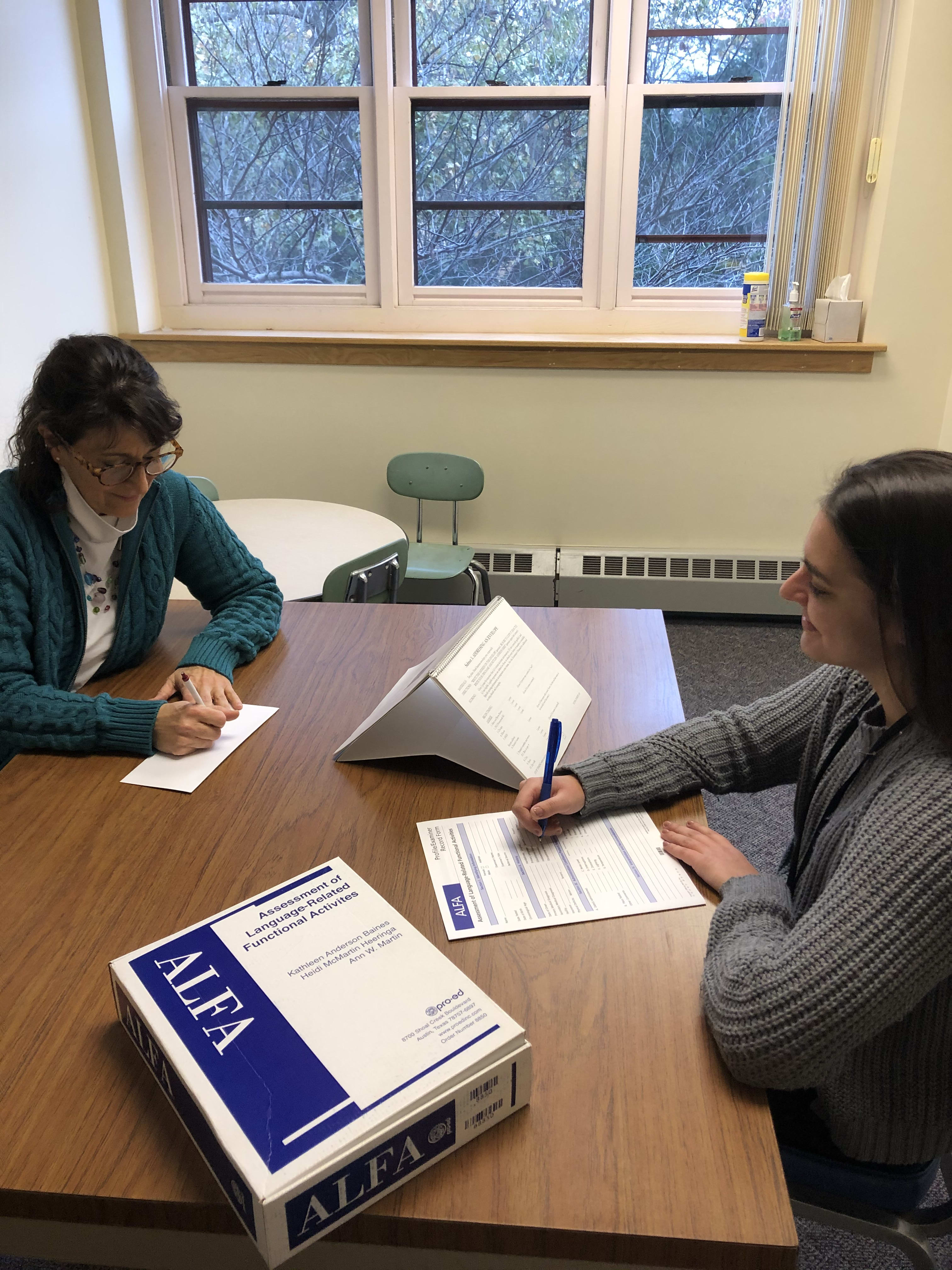
$10
Novice Clinician
"First client! I hope this goes well. I feel like I might be sick!" You are just starting out! This clinic thing is all new to you. Baby steps! Thank you for your support of our clinical programs!
$20
Advanced Beginner Clinician
"Wow! That wasn't so bad!" Your first few sessions are completed. It really wasn't that bad, and you're starting to gain a little more confidence. Good for you! Thank you for your support of our clinical programs!
$50
Competent Clinician
"Oh my gosh, that actually worked!" You are starting to incorporate more evidence-based practice ideas and structure with your clients. You're trying new things, and they are showing positive results! Thank you for your support of our clinical programs!
$75
Proficient Clinician
"I saw five clients today!" Your clinical confidence is growing day by day. You are seeing many more clients with a variety of communication and swallowing challenges, and are seeing the positive impact that you are making in their lives. You're doing amazing things! Thank you for your support of our clinical programs!
$100
Expert Clinican
"Time to look for a JOB!" Remember when you were a novice? Not anymore! Your hard work and dedication have lead you to expert level. You have an abundance of knowledge on various speech, language, swallowing and hearing disorders, and you’ve got this evidence-based practice thing down cold! Congratulations! Thank you for your support of our clinical programs!

